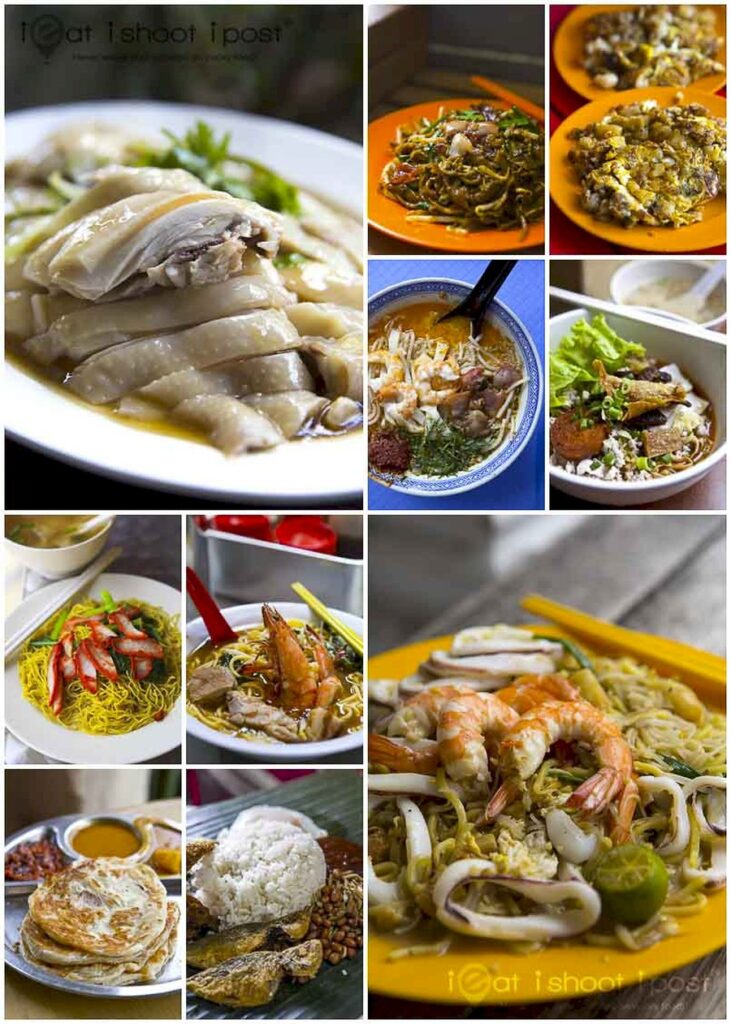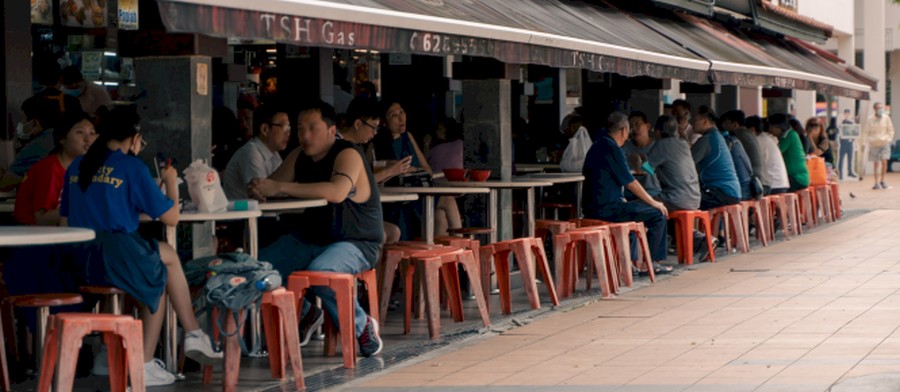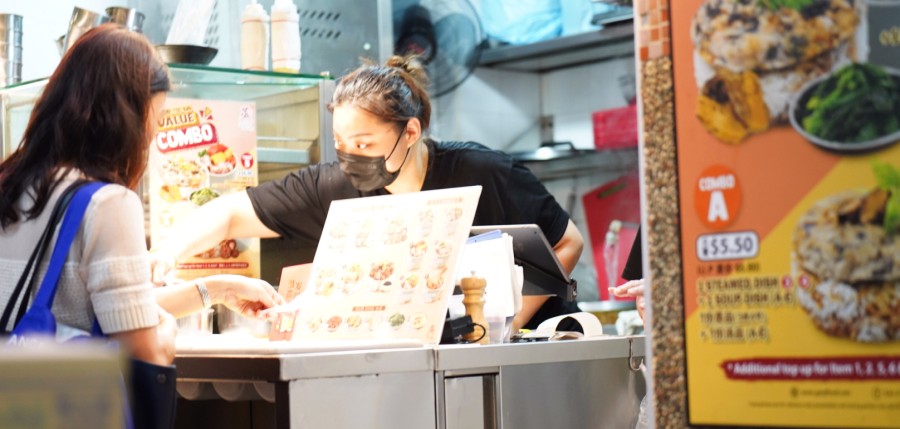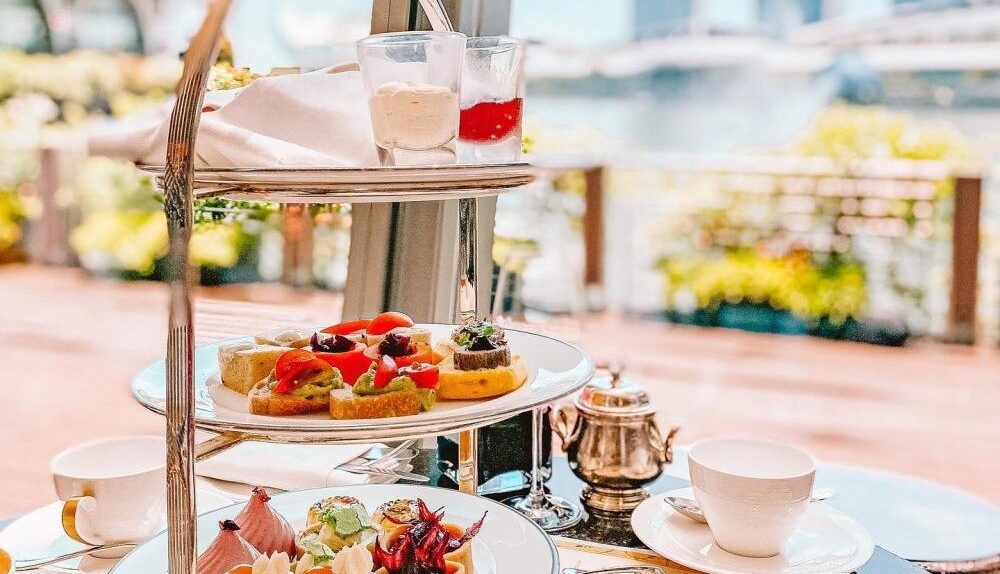Singapore is a melting pot of cultures, languages and cuisines. One of the most distinctive and beloved aspects of its rich heritage is its hawker culture, which refers to the practice of dining at hawker centres, open-air complexes that house food stalls offering a gamut of local food in a multicultural urban context. Hawker centres are not only places to enjoy affordable and delicious meals, but also vibrant communal spaces that promote social cohesion, moderate the cost of living and foster a common national identity based on shared experiences, values and norms.
The origins of hawker culture can be traced back to the 1800s, when the early migrant population from China, India, Malaysia and other parts of Asia settled in Singapore and started selling quick and cheap meals on street pavements, in town squares and parks – wherever they could set up their makeshift stalls. These street hawkers catered to the diverse tastes and preferences of their customers, creating dishes that incorporated ingredients and influences from different ethnic groups. Over time, these dishes evolved into distinctive local delicacies that are now synonymous with Singaporean cuisine, such as chicken rice, laksa, satay, rojak and many more.

In the 1950s and 1960s, as Singapore underwent rapid urbanisation and industrialisation, the government began to relocate the street hawkers into purpose-built hawker centres for better hygiene, sanitation and regulation. These hawker centres were designed to provide convenient access to food for residents living in public housing estates, as well as workers in industrial areas. They also served as social hubs where people from all walks of life could mingle and interact over their favourite hawker food. Today, there are over 100 hawker centres across the island serving as “community dining rooms” for Singaporeans.
Hawker culture in Singapore is not only about the food itself, but also about the people who prepare it and those who enjoy it. The hawkers are well regarded for their mastery of their culinary traditions, which they have inherited from their predecessors or acquired through years of practice and innovation. They are also passionate about their craft and take pride in serving quality food to their customers. Many hawkers have become household names or even celebrities in their own right, attracting loyal patrons and long queues for their signature dishes.

The customers are equally important in sustaining hawker culture in Singapore. They appreciate the diversity and variety of hawker food available at different stalls and centres. They also value the affordability and accessibility of hawker food, which makes it suitable for everyday consumption as well as special occasions. Moreover, they cherish the sense of community and belonging that hawker centres provide them with. They often frequent the same stalls or centres regularly, forming bonds with the hawkers and fellow customers over shared love for food.

Hawker culture in Singapore is an integral part of its intangible cultural heritage that reflects its multicultural society. It is also a living heritage that continues to evolve with changing times and tastes. In recognition of its significance and value, Hawker Culture in Singapore was successfully inscribed as Singapore’s first element on the UNESCO Representative List of the Intangible Cultural Heritage of Humanity on 16 Dec 2020. This was a result of a two-year long journey that involved widespread participation and support from the public, community groups and experts who contributed to the nomination dossier.
With the inscription on UNESCO’s Representative List, it is hoped that there will be greater appreciation and recognition for hawker culture in Singapore among locals and foreigners alike. It is also hoped that there will be more efforts to safeguard this precious heritage for future generations by ensuring its continued practice and transmission by hawkers as well as its enjoyment by customers. As Prime Minister Lee Hsien Loong said at the National Day Rally in 2018 when he announced Singapore’s nomination bid: “Our hawker culture is a source of pride for us all… It reflects our daily lives; it reflects our identity as a people.”
Learn more:
1. nhb.gov.sg2. nea.gov.sg3. thediplomat.com4. nationalgeographic.com5. roots.gov.sg

To further illustrate the diversity and significance of hawker culture in Singapore, let us take a closer look at some of the iconic hawker centres that have been serving generations of Singaporeans with their mouth-watering dishes and stories.
One of the oldest and largest hawker centres in Singapore is Tekka Centre, which was built in 1915 as Kandang Kerbau Market. The name Kandang Kerbau means “buffalo enclosure” in Malay, referring to the area’s cattle trade. The Chinese called it tek kah because of the wild bamboo found in the area. The market was a bustling hub for fresh produce, meat and seafood, as well as cooked food stalls catering to the diverse communities living nearby. In 1982, the market was demolished and rebuilt as a modern complex with separate sections for wet market, dry market and hawker centre. Today, Tekka Centre is renowned for its wide array of Indian food, such as roti prata, biryani, dosa and curry.
Another hawker centre with a long history is Chinatown Complex, which was built in 1981 to house the last of Chinatown’s street hawkers. With around 700 stalls, it is Singapore’s largest hawker centre and market today. The hawker centre offers a variety of Chinese cuisines from different dialect groups and regions, such as Teochew porridge, Hainanese chicken rice, Cantonese dim sum and Sichuan hotpot. It also boasts some of the cheapest Michelin-starred food in the world, such as Liao Fan Hong Kong Soya Sauce Chicken Rice & Noodle and Tai Hwa Pork Noodle.

A hawker centre that reflects Singapore’s “garden city” image is Newton Food Centre, which was Singapore’s first hawker centre designed and built with a garden setting that complemented its green surroundings. Opened in 1971, it was originally named Newton Circus Food Centre after its location at a traffic junction. It became popular among locals and tourists alike for its seafood dishes, such as chilli crab, barbecue stingray and sambal lala. In 2005, it underwent a major renovation that added more stalls, seating capacity and landscaping features. It also gained international fame when it was featured in the movie Crazy Rich Asians.
A hawker centre that showcases Singapore’s seaside lifestyle is East Coast Lagoon Food Village, which was built on reclaimed land and opened as a hawker centre in 1978 to complement the beach-front activities of Singapore’s largest seaside resort. It was originally named East Coast Lagoon Hawker Centre after its proximity to a man-made lagoon that offered water sports facilities. The hawker centre became a favourite spot for families and friends to enjoy local delicacies while enjoying the sea breeze and views. Some of the signature dishes include satay bee hoon, oyster omelette and rojak.
These are just some examples of how hawker culture in Singapore has evolved over time to suit the changing needs and preferences of its people. Visit Singapore and capture the experience the much talked about Singapore Hawker Culture. Hawker centres are not only places to fill our stomachs, but also places to nourish our souls with their rich flavours and stories.













Hi, I check your new stuff like every week. Your humoristic style is awesome, keep it up!